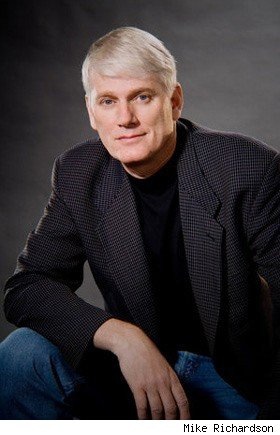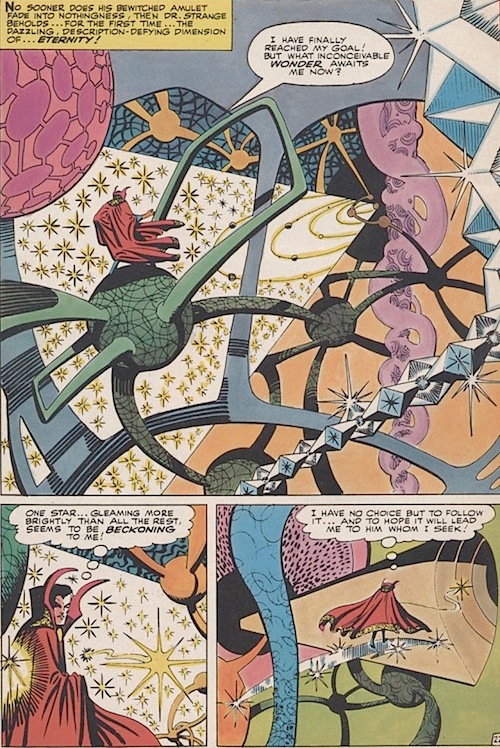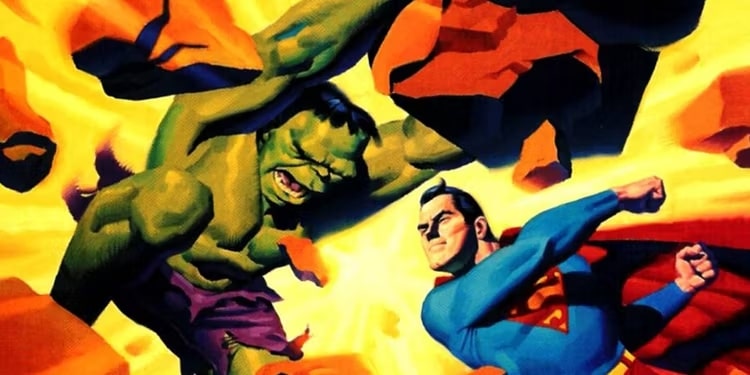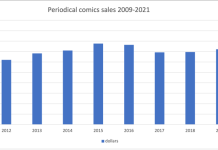Maybe it’s just that it was a relatively slow news week but it seems that during our two-day outage, many, many essays and interviews of merit and import were posted that are cutting right to the quick of what coming up. So without further ado, here’s ALL THE STUFF YOU NEED TO KNOW:
Laura Hudson fearlessly interviews Dark Horse owner Mike Richardson about the recent layoffs and former employee analyses of the reasons for the same. Props to Richardson for addressing the issues even if he isn’t quite so convincing that TROUBLEMAKER and the Gold Key line haven’t been less than successful for the company:
CA: Do you have any concerns about Dark Horse’s market share slipping from third to fifth place? How do you see Dark Horse addressing that as you move forward?
MR: The slipping of market share also you have to take in context. First of all, we’ve slipped before, and in the month we supposedly slipped, our lineup was not that strong that month. We have those months in the past; they happen occasionally. But if you take the time to look at what that actually means, our market share slip, all three companies after Marvel and DC are pretty close. I think we published less than twenty comics. The companies that supposedly passed us up published around forty comics. So is that relevant? Should we have doubled our offerings so we could stay in third place? It’s sort of a silly argument.
§ Michael May talks to ACTUAL RETAILERS about ACTUAL DIGITAL COMICS:
Digital comics were a major theme at C2E2 this year. I don’t suppose I was surprised by that exactly, but it did kind of sneak up on me. Much the way I suppose digital comics have been sneaking up on publishers and fans for the last couple of years. They’ve been around; we’ve all noticed them; we’ve even been talking about them quite a bit, but the industry’s observation of the digital format has seemed sort of detached and possibly even bemused. Sort of, “Yep. We see that there’s this other way of reading comics and it’s a nice option for some people, but print’s not going anywhere and we’ll still focus mostly on that.” It’s only been recently that we seem to have realized that – oh, shit! – print could be in danger and we’ve got to figure out what we’re going to do to survive!
It wasn’t always this way. Of course, superhero comics have mainly been bland in terms of innovation and a great deal of the experimentation in comics was done by independent creators. But the very fact that Marvel was not the “establishment” back when it decided to stop publishing romance comics and jump back into the superhero fray in the early 1960s meant that the creators at Marvel had a bit more free rein to go nuts. Once DC saw that it sold, they too allowed their creators to go a bit nuts. So we got Kirby. We got Ditko. We got Steranko. We got Starlin. We got a bunch of creators who were willing to go further than their predecessors had gone, challenging themselves and their readership to keep up. Mostly, of course, it didn’t work. Books got cancelled, DC imploded, and everyone retreated. Then we got Alan Moore and later, Morrison. And we got the Image guys – who, as much as they might get berated today, once again forced readers to adapt to their style. We got Sienkiewicz and his artistic imitators (most of whom have never worked on superhero books). We got Frank Quitely and his astonishing panels in We3, which everyone seems to love but no one copied (or at least used as inspiration for their own innovations). All of these creators, whether successful or not, forced readers to deal with a new way of reading and processing comics. Their contributions have been co-opted by the mainstream and refined. I don’t mind that in the least – in fact, I celebrate it. But that doesn’t mean today’s creators shouldn’t figure out ways to push the envelope in their own ways.
Colleen Doran talks about royalties and why you must always look at the numbers:
About a year-and-a-half ago, I found a discrepancy in the accounting on one of my book royalty statements which showed the publisher had not calculated my income correctly on a major book. I reported the discrepancy, and it took the client over six months to forward the shortage, which was about $2,000. EDIT: Yes, it was an HONEST mistake. They agreed with me within ONE hour of my pointing it out. I don’t believe they were trying to rip me off. However… Since then, royalty statements at the company have been revised. It is no longer possible to find the mistake I found with the new accounting system the company uses.
Last year I didn’t go to MoCCA, Brooklyn Comics Art, TCAF or SPX for Sparkplug. Other people did those shows for Sparkplug. This was noted by a few people as Sparkplug not being at the shows. This year, I’ve gone to MoCCA and will be doing TCAF. But the truth is I’m only looking forward to TCAF and maybe Brooklyn. We just did the Stumptown Comics Fest in Portland. And after MoCCA and Stumptown in a row, all I can think about is why in god’s name Sparkplug is still going to the conventional comic conventions. I’m worried about comics becoming more and more insular, under the pretense of becoming more and more accessible.
Nick Gazin has a look at the sad sack basis of many cartoonists…
Some people are great at making auto-bio comics, but at some point in the late 90s people started ruining the form by making comics about how cute they were. Jeffrey Brown, Craig Thompson, and James Kochalka all idealize the fuck out of themselves. Sometimes Chris Ware does it too. These people all make comics that give me the creeps. R. Crumb and Pete Bagge often star in their own comics, but they are confronting personal failings as much as the failings of the world around them. They never try to show how suave and cool they are. They’re fucking misanthropic outsiders with points of view and they know how to tell a story. Making a comic isn’t as simple as saying, “Girls won’t think I’m cool if I draw myself in a Spiderman costume. I know! I’ll draw myself being nice to girls and having my heart broken by the type of bitch that I hope will come and meet me at the next alternative comix con!” FUCK! TRY HARDER, ASSHOLES! CHALLENGE YOURSELVES! I AM SCREAMING SOME GIBBERISH AS I TYPE THIS! COMICS IS NOT THE SPECIAL OLYMPICS SO STOP BEING RETARDS!
Holy shit, we have five more of the most important things to read, but those will have to come in Part II!










I like Nicks POV. And I know we’re not supposed to say RETARD anymore. . .but it’s a funny word that fits a lot of people and current situations in the world today. Sorry if I sound like a retard.
Cute? Did he actually read Blankets? Cute is not the word I would use to describe it.
Kolchaka’s seems “cute” because he seems to actually have a happy family life, I guess? God forbid.
Greg Burgas points out that today’s stringent house styles at Marvel and DC have left mainstream comics looking duller all the time:
Short answer: Huh?! What? Are you serious?
Longer answer: Jim Lee doesn’t draw like Brian Stelfreeze. Brian Stelfreeze doesn’t draw like Pasqual Ferry. Pasqual Ferry doesn’t draw like George Perez. Goerge Perez doesn’t draw like Kevin Nowlan. I could go on and on. THERE IS NO HOUSE STYLE. The field for acceptable styles, superhero comics or otherwise is WIDE open…and I couldn’t be happier.
I’ve been complaining for years about the lookalike art in mainstream comics — what Douglas Wolk called the “default” style of modern superhero comics. It’s really a single house style embraced by both Marvel and DC (and sometimes Image and Dark Horse).
It seems all the young artists are learning from the same “how to draw comics” books that you can find in any bookstore (if you can find a bookstore these days).
I miss the individual art styles of the ’60s, ’70s and ’80s. I miss being able to randomly open a comic book to any page and instantly know whether it was drawn by Kirby or Colan or Kubert or Buscema. I can’t do that anymore, because it all looks alike.
“Jim Lee doesn’t draw like Brian Stelfreeze. Brian Stelfreeze doesn’t draw like Pasqual Ferry. Pasqual Ferry doesn’t draw like George Perez. Goerge Perez doesn’t draw like Kevin Nowlan.”
And how many of those artists you named are drawing a regular monthly books for Marvel and DC?
looking to sell some comics to put kid in college where is a good place to sell?